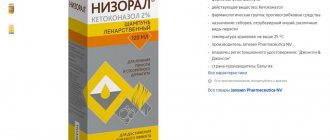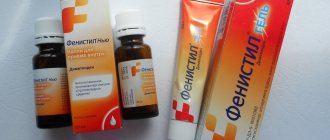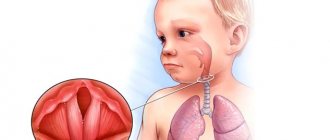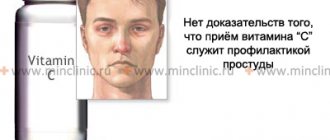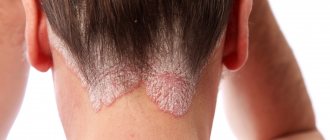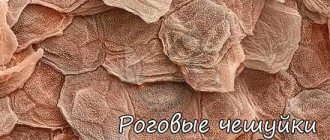What is atopic dermatitis
Atopic dermatitis is a chronic skin disease characterized by a relapsing course.
Babies with atopic dermatitis are bothered by itching and dry skin. Foci of inflammation can be located throughout the body, but they especially “love” children’s cheeks and folds, as well as the area under the diaper. Statistics indicate that atopic dermatitis occurs in every fifth baby [1]. Why is he dangerous? Lack of treatment can lead to the development of severe forms of atopic dermatitis, the spread of inflammation and the atopic march. In this condition, the disease begins to “march” through the child’s body, provoking the appearance or exacerbation of concomitant diseases. In 20-43% of cases, the development of bronchial asthma is possible, and twice as often - allergic rhinitis or eczema [2].
In addition, disruption of the hydrolipid barrier that occurs with atopic dermatitis in children can cause a secondary infection. Unfortunately, atopic dermatitis cannot be “outgrown.”
How to make an appointment with a dermatologist
You can make an appointment with a dermatologist at the pediatric department of JSC “Medicine” (academician Roitberg’s clinic) using the form on the main page of the site. It is necessary to enter feedback information in order to agree on a convenient time and date for a visit with the child.
If it is necessary to make an accurate diagnosis, the doctor can additionally refer you for examination to other specialized specialists: an allergist, an immunologist, etc. Contact reception number for questions and appointments with doctors. The clinic has a convenient location in the Central Administrative District near the Mayakovskaya metro station at the address: Moscow, 2nd Tverskoy-Yamskaya lane, building 10. Other stations are within walking distance: Belorusskaya, Chekhovskaya, Novoslobodskaya, Tverskaya " Qualified doctors with extensive experience treat young patients with care and attention.
Take care of the health of your children together with JSC “Medicine” (clinic of academician Roitberg).
Symptoms of atopic dermatitis in children
According to recent studies [3], in 45% of babies, atopic dermatitis debuts between the ages of two and six months. In 60% of patients during the first year of life.
With atopic dermatitis in children, clinical symptoms and localization of inflammation largely depend on age. There are infant (up to one and a half years), child (from one and a half years to puberty) and adult phases. The following symptoms are common to all phases:
- Severe dryness of the skin (xerosis), which cannot be treated with regular baby cream .
- Redness and inflammation on the skin (especially symmetrical ones).
- Itching, causing severe discomfort to the child.
- Recurrent course (alternating periods of remissions and exacerbations). Moreover, in the cold season, deterioration is more often observed, and in the warm season, improvement is observed.
According to the nature of the course, acute and chronic stages of atopic dermatitis are distinguished, which are expressed by different signs (symptoms):
● Acute stage. Rough red spots (erythema), nodular rashes (papules), swelling, and crusts (including weeping) may appear on the baby's skin.
● Chronic stage. Accompanied by lichenification (thickening of the skin), cracks on the soles and palms, scratching, and increased pigmentation of the skin of the eyelids.
Folk remedies
To alleviate the patient’s condition, you can use improvised means, for example, shampoos or ointments containing natural tar. They do not treat seborrheic dermatitis, but suppress excessive proliferation of the stratum corneum of the epidermis.
Tea tree oil has an antifungal and soothing effect. It is applied pointwise to inflamed seborrheic areas of the skin.
Any folk remedies do not treat seborrhea. Herbal infusions, decoctions, and lotions may cause short-term minor improvement in some adolescents, but for most they have no effect. They need to be used constantly, for a long time. And many natural remedies cause allergies, so the skin condition only worsens. They can be used as auxiliary, but not as the basis of treatment. If you rely on traditional medicine and natural remedies, you can waste time, so the recovery will be longer than when you immediately start using special remedies.
Causes of atopic dermatitis in children
Atopic dermatitis can be considered a hereditary disease, because the most important role in its occurrence is played by a genetic factor [3]:
- In 80% of children, it occurs if both parents have or have had atopic dermatitis.
- In more than 50% of children - if at least one of the parents was sick, especially the mother (this doubles the risk of transmitting the disease “by inheritance”).
Some prenatal factors can also provoke atopic dermatitis in a baby: for example, poor nutrition of the expectant mother, contact with toxic substances, infections suffered during pregnancy, as well as bad habits and stress.
In addition, atopic dermatitis more often develops in babies who suffered oxygen deprivation during childbirth, were born prematurely and were bottle-fed (perinatal factors).
Diagnosis of atopic dermatitis in children
For a long time it was believed that atopic dermatitis in children is predominantly an allergic disease. However, it has now been proven that this is, first of all, a disease with dysfunction of the epidermis! And food allergies are detected only in 30-40% of children with atopic dermatitis.
The symptoms of atopic dermatitis are almost always influenced by certain environmental triggers. This could be chlorinated or “hard” water, soap, contact with an allergen, unfavorable climate and even stress. Another common trigger is bacteria that enter the skin through a damaged epidermal barrier.
Only a doctor (pediatrician, dermatologist, allergist) can make a diagnosis of “atopic dermatitis in children”! It takes into account the presence of external signs of disease and itching, as well as hereditary factors. Laboratory tests may be prescribed for children to carry out diagnostics. For example:
- General detailed (clinical) blood test.
- Biochemical general therapeutic blood test.
- General (clinical) urine analysis.
- Study of the level of total immunoglobulin E in the blood.
- Skin testing with allergens.
- Skin biopsy.
Treatment of atopic dermatitis in children
In modern medicine, there are three degrees of severity of atopic dermatitis in children:
- Easy. The child responds well to treatment, remission can last more than 10 months, the itching is minor, the redness is slight. Exacerbations occur no more than twice a year.
- Medium-heavy. Exacerbations occur 3-4 times a year, and periods of remission are reduced to 2-3 months. The therapy gives less pronounced results, the redness “stubbornly” returns.
- Heavy. Long-term exacerbations are interrupted by short periods of remission - up to one and a half months. Treatment helps little or for a short period of time; the baby’s behavior is greatly affected by itching [4].
At all stages of atopic dermatitis, pediatricians and dermatologists recommend emollients - cosmetic skin care products. They moisturize the skin and help restore the level of lipids - the most important structural components. During periods of exacerbation, emollients can be applied frequently and generously.
Pay attention to the composition; it is advisable that emollients are not addictive. Their main tasks are to help the skin produce its own lipids, providing effective hydration and softening. In addition, the constant use of emollients prolongs periods of remission and alleviates the symptoms of atopic dermatitis.
The Mustela Stelatopia line of cosmetics will help restore skin comfort for a long time! Stelatopia emollients are effective at all stages of atopic dermatitis , incl. at its first signs - increased dryness of the skin.
Studies have confirmed that the use of Stelatopia emollient cream can reduce the likelihood of developing atopic dermatitis by 51% ! [6]
Treatment (use of hormonal drugs) for atopic dermatitis in children can only be prescribed by a doctor, taking into account age, symptoms, concomitant diseases and test results. Self-medication can be dangerous!
- For external therapy for moderate and severe degrees of atopic dermatitis, topical glucocorticosteroids, topical calcineurin inhibitors and others are used.
- In case of mild disease, the use of Stelatopia Emollient Cream reduces the severity of inflammation after 32 hours, due to the presence of sunflower oil in the distillate [5].
- In systemic therapy, the drugs dupilumab, cyclosporine, glucocorticosteroids and others are used orally or in injection forms.
- To relieve itching - clemastine, hifenadine, cetirizine, chloropyramine, levocetirizine and others. The use of Stelatopia emollient cream as a cosmetic skin care product reduces the severity of itching in 80% of cases [7].
- Physiotherapy treatment may include phototherapy. Sometimes, in the treatment of atopic dermatitis, diet therapy, acupuncture, plasmapheresis and some other methods may be prescribed.
External factors that cause dry skin in a child
Dry skin in a one-year-old child may not only be due to medical problems. Improper or excessive care, too frequent bathing, poor nutrition, and climate affect the condition of the dermis. Using very hot water or very hard water when washing will dry out your skin. We recommend paying attention to special mild detergents, monitoring the water temperature when bathing (not higher than 37°C), choosing soft towels and using a moisturizing or nourishing cream after a bath.
Another external cause is dry air and overheating. Thermoregulation processes in babies are poorly developed and continue to develop after birth, so the baby cannot quickly and adequately respond to overheated air or excessive wrapping. This is also due to the fact that the sweat glands after birth do not function sufficiently and have underdeveloped ducts. First of all, the formation of sweat glands ends on the forehead and head, then on the chest and back. The formation of the sweating function occurs over 7 years.
It is recommended to use a humidifier at home, especially in winter when the heating is running (the recommended humidity in the room should be 40-70%) and preference for light clothing that does not allow overheating (sometimes the easiest way to determine may be to feel your back and neck under clothing - they should not being hot or wet, as well as red cheeks in a baby with normal, non-rough skin are signals of overheating).
Another feature is the incomplete formation of melanin in children, a pigment that protects the skin from UVA rays. Therefore, until the age of 6 months, the baby should avoid direct sunlight, and at an older age, do not forget about sun protection. Up to a year, a child can be in the open sun for no more than five minutes a day, and only with a special children's sunscreen. Ultraviolet light dries out the skin and also increases the risk of cancer.
Frost and cold air are another challenge. Under the influence of bad weather in autumn and winter, the development of redness, dryness, peeling and irritation of the skin is possible. What to do to avoid dryness? Use cold cream (or emollient) about 20-30 minutes before leaving the house to prevent chapping of your baby's face and hands.
If your child’s dry skin lasts for a long time, you should first contact your pediatrician to rule out various diseases. If you have a skin rash, you may need to consult a dermatologist. Following your doctor’s recommendations, as well as proper daily care, will help you cope with dryness.
Prevention of atopic dermatitis in children
For atopic dermatitis, primary, secondary and tertiary preventive measures are distinguished.
Primary prevention
is aimed at preventing the occurrence of atopic dermatitis in children.
Recommended:
- Expectant mothers with a tendency to allergic reactions should exclude allergenic foods from their diet.
- Introducing complementary foods to babies begins at four months of age.
- Pregnant women and newborns at risk should take probiotics containing lactobacilli.
- Practice breastfeeding whenever possible.
- Eliminate exposure of your baby to tobacco smoke.
- Maintain humidity levels and regularly ventilate the children's room.
Secondary prevention
is aimed at eliminating risk factors that, under certain conditions (stress, weakened immunity, etc.) can lead to the occurrence, exacerbation and relapse of atopic dermatitis.
Recommended:
- Regular consultations with specialists.
- Maintaining awareness of new research and drugs in the treatment of atopic dermatitis.
Drug therapy
If cosmetics do not bring the desired effect, which happens quite rarely, then you need to contact a dermatologist who, after an examination, may prescribe drug therapy, for example, ointments containing glucocorticosteroids. There are also preparations for oral administration. They are released strictly as prescribed and prescribed by a doctor. These are serious drugs that have many side effects when used for a long time. For a teenager whose body is undergoing restructuring, this can have unpleasant consequences, so such methods should be resorted to only in extreme cases. You cannot use such products for more than a month.


